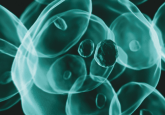Tumor-like spheres used to screen for potential cancer drugs

Researchers from The Scripps Research Institute (CA, USA) have utilized an innovative three-dimensional method to screen for potential cancer drugs. The results were reported in the journal Oncogene.
The technique utilizes tiny, aggregates of cells termed spheroids. These structures can be used to interrogate hundreds or even thousands of compounds rapidly using high-throughput screening.
In this study the team focuses on the RAS proteins, the most frequently mutated oncogenes in cancer.
Thus far, efforts have been focused on identifying downstream targets on which RAS is dependent. Progress has been challenging due to the reliance on two-dimensional adherent monolayer cell cultures, which do not adequately mimic the tumor environment.
“Until now, most of the research to screen for cancer drugs has used cells that are growing flat on a plate,” explained Louis Scampavia (The Scripps Research Institute), one of the study’s co-authors. “With these 3-D spheroids, we emulate much more closely what’s found in living tissues.”
The investigators performed a phenotypic screen to search for drugs that had an effect on cell growth. “We came at this in an unbiased way,” corresponding author Joseph Kissil (The Scripps Research Institute), explained. “We were not trying to design something to attack a specific part of the KRAS protein. We were just looking for something that acted on some part of the pathway that’s driving cell growth.”

The researchers used confocal microscopy to confirm that the cell lines were forming spheres. Here is the BxPC-3-KRASG12V cell line.
CREDIT: Kota et. al./The Scripps Research Institute
The investigators discovered one compound that was previously not know to affect KRAS, termed Proscillaridin A – a compound similar to a class of drugs used to treat some heart conditions.
Although the team says this particular drug is unlikely to be developed as a cancer treatment, it validates the approach of conducting drug screenings using spheroids. “It’s unlikely we would have discovered this connection using standard 2-D methods,” Scampavia added.
“From our perspective, this is a proof-of-principle study,” Kissel commented. “It shows you can look at libraries of drugs that have already been approved for other diseases and find drugs that may also work for cancer. In theory, you could use this screening method for any line of cancer cells and any mutation you want.”
“We would love to use this research to create a pipeline for new oncology drugs. Many of the most promising compounds may be overlooked with 2-D screening. This study provides direct evidence that screening for drugs using 3-D structures of cancer cells may be more appropriate,” one of the study’s corresponding authors Timothy Spicer concluded.
Sources: Kota S, Hou S, Guerrant W et al. A novel three-dimensional high-throughput screening approach identifies inducers of a mutant KRAS selective lethal phenotype doi:10.1038/s41388-018-0257-5 Oncogene (2018)(Epub ahead of print); www.eurekalert.org/pub_releases/2018-05/sri-tsh051118.php





